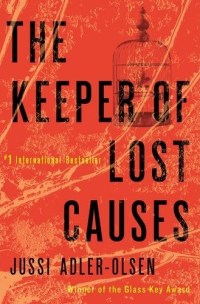The Postmortal by Drew Magary
 Tuesday, August 30, 2011 at 11:15AM
Tuesday, August 30, 2011 at 11:15AM 
Published by Penguin on August 30, 2011
In 2019, the "cure for aging" -- gene therapy -- is legal in only four countries, but immortality can be purchased on the black market. The issue is divisive: gene therapy's opponents use terrorist tactics to attack the black market while protests in favor of legalizing the cure turn ugly. The desire to cheat death ultimately triumphs.
John Farrell takes the cure without devoting much thought to its downside: If you stop aging, retirement isn't an option and you can forget about social security. If your parents don't die, you don't inherit. If you live forever, you never experience eternal respite from annoying relatives and politicians, it's less easy to ignore future threats like global warming, and the escape clause from your marital vows -- until death do us part -- becomes a nullity. Couples often say they marry so they can grow old together. Would they bother with marriage if eternal youth made possible an eternal choice of partners? On a more serious note, the pressures of overpopulation would dramatically increase the already unsustainable consumption of finite resources, a predicament that would initially lead to hoarding, then to war, and ultimately to a barren planet.
Beginning in 2019, Farrell blogs about the impact gene therapy has on his life and the world. The introduction to The Postmortal advises us that Farrell's text files are discovered in 2090. Through Farrell's eyes, we watch the escalating disaster: the rise of pro-death pressure, the burgeoning prison populations resulting from life sentences that last forever, the harsh measures China imposes to assure that its citizens forego the cure, the glorification of suicide, the fracturing of society. Some blog entries reproduce news stories, political punditry, and advertisements (including a FAQ promoting a new religion). Some of Farrell's entries are observational, others are personal.
Postmortal is not immortal; death still occurs from injury and disease, suicide and murder. Death is a frequent subject of Farrell's blog as people close to him are killed. After a few decades, Farrell becomes an end specialist (sort of a futuristic Kevorkian, except that the government not only approves of assisted suicide but rewards it with a tax rebate). It is difficult to fault Farrell's role in the postmortal future. Compared, at least, to the roving street gangs, organ thieves, and religious charlatans, Farrell's job seems both necessary and altruistic.
Although Drew Magary describes a terrifying future, he keeps the tone light -- perhaps too light. The Postmortal works surprisingly well as a dystopian comedy (if there is such a thing), but the incongruity of laughter and disaster robs the story of its potential power. In the novel's third act, after an event called "the correction" occurs, the story appears to take a more serious course. The disconnect between humor and horror at that point becomes jarring; it is not a line Magary straddles comfortably. Viewed as a cautionary tale about the consequences of overpopulation, the comedy seems misplaced; viewed as a farcical take on the desire for immortality, the drama overshadows the farce.
Those reservations aside, I have no qualms about recommending The Postmortal to readers who aren't put off by dark comedy. While I got a kick out of Magary's humor (his dialog is both realistic and insanely funny), I also enjoyed pondering the issues he raises. Magary obviously gave considerable imaginative thought to the consequences of a genetic cure for aging (including its impact on home run records). There were times when I thought the story went off course, but there was never a moment when my interest in the novel waned. In the end, Magary tells us, there is only the inevitable end. If you can accept that -- even more, if you can laugh about it -- I suspect you'll like The Postmortal.
RECOMMENDED



